Warren Agnew can tell a lot from an inky footprint. A stoat track is easy to recognise because of the hairiness of the feet. But did you know that a female stoat’s hind foot is 50% wider than her front foot? With male stoats however, the footprints are all the same size. So if you have a stoat incursion in your sanctuary, one of Warren’s ‘Black Trakka’ tracking tunnels can tell you whether your intruder is a male – worrying enough – or a potentially pregnant female.
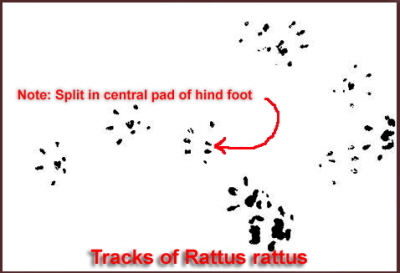
Rats, mice, hedgehogs, four species of cockroach, various weta footprints and even tiny ant prints can all be distinguished from each other. Skinks and geckos have very distinctive footprints too.
Mouse footprints are a smaller version of the rat and with rats, mice and hedgehogs it’s also possible to distinguish males from females just by looking at their footprints. Females of all three species have a wider pelvis than the males and that affects where they put their back feet. While a male’s front and back left foot will be in line or on top of each other, with a female mouse, rat or hedgehog, the back left footprint will be just outside the line of the front left print (and similarly for front and back right feet).
It’s fascinating stuff and reflects a lifetime’s interest in the natural world, sharp observation skills and an inventive and questioning mind – attributes which must have made Warren a fabulous and memorable teacher. His invention of the ‘Black Trakka’, he says, goes back to when he was teaching at a small country school about 10 years ago. It’s a story of two children, a grey warbler – and a determined villain…
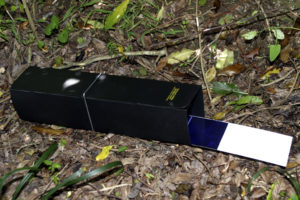
Two of Warren’s pupils had made a hide so that they could observe a grey warbler’s nest. It is possible to get quite close to a grey warbler without disruption, says Warren and the children had a couple of chairs set up in their hide with a coke bottle focussed on the nest, used as an imaginary telescope. There they regularly sat, writing up what they saw happening until one day a stoat approached the nest. The children chased it away. But sometime over the following weekend, the stoat returned and the nest was predated.
Warren phoned Ian McFadden, DOC’s Head of Predator Control at the time and Ian sent out some reports on stoats. There was a need, Warren learned, for a new type of stoat trap. DOC had funding from the Government to address the stoat predation issue and they were calling for submissions to develop an effective stoat trap. So Warren invented one and his submission was one of three chosen by a DOC group for $10,000 in development funding.
Stoats like to run through tunnels, so Warren’s trap had a 0.5m tunnel with two sensors in it, 103mm apart so that they weren’t triggered by mice. The trap was on the ground, but with the sensor up off the ground so that it wasn’t triggered by lizards and the tunnel was scanned by the sensors several times per second. When the sensors were triggered, the animal would get a squirt on the back from a pressurised can containing a toxin and the animal would die.
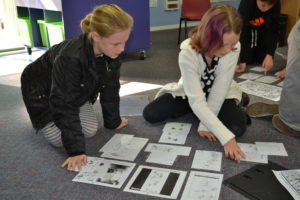
The tunnel system worked, but the ultimately the DOC project didn’t achieve anything, says Warren, for at the time there wasn’t a toxin that he was happy to use. Both 1080 and cyanide were unsuitable. So the trap sat for a few years – until Warren came up with another idea – this time for a toxin.
Cholicalciferol (Vitamin D3), is toxic at high dose levels. It causes systemic calcification which leads to kidney and heart failure and is currently used in toxic pellets for possums and rats. According to Warren, DOC scientists were hoping to put the compound into a biscuit that stoats would eat, but stoats are killers not biscuit-eaters, says Warren and he had a different idea.
Warren got hold of some Cholicalciferol and essentially heated it in oil to dissolve it. With the help of an animal healthcare expert, he added a compound used in cattle drenches to take the now-liquid Vitamin D3 through skin and fat, directly into the blood.
Warren now had a toxin that could be squirted onto small animals with toxic consequences, but was non-toxic to people and dogs because their larger size meant that if accidental exposure did occur it would be at relatively, therapeutic levels. Cholicalciferol is not only used in possum bait. It’s also a treatment for rickets and Vitamin D deficiency in humans.
When trialled, 2 mls of the compound killed introduced predators – including mustelids, rodents and possums. They died of a sudden heart attack on Day 3. DOC allocated $30,000 and the toxin underwent further tests with Landcare Research, where it killed six female stoats and caused debilitation in six males to a level where they were put down. The strength of the compound was subsequently increased, but it has not been commercially developed to date.
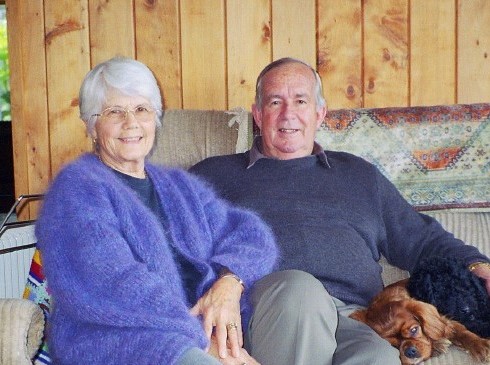
Meanwhile Warren and his wife Lois were woken one night be a loud, shrill call outside their bedroom window. Stoats are not as silent as they’re sometimes reputed to be, says Warren and this was the call of a female stoat – resident, as they later discovered, under their henhouse.
Most people would simply have trapped the stoat. Not Warren and Lois. They began feeding her chicken necks.
The stoat was allowed to remain beneath the henhouse for several months, quickly becoming accustomed to her daily feed of chicken necks. Before long she was appearing three times daily for meals – at 10.30am, 1.30pm and 4.30pm. With a tracking tunnel set up, along with a camera linked to their television, Lois and Warren watched and learned.
When a male visited the resident female, the new tracks alerted Warren to the difference between male and female stoat footprints. With tracking tunnels back then being messy affairs involving brown paper, a sponge, food colouring and often blurry footprints, it wasn’t long before Warren was putting his inventing skills to work again, this time coming up with a better option in track monitoring. He was awarded $30,000 to develop an ink-based tracking system.
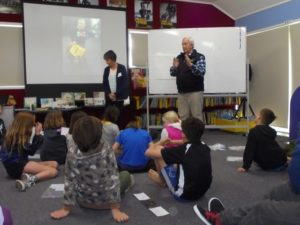
It took a long time to develop the Black Trakka, says Warren. There were a few key requirements. The ink had to stay moist for months and not be affected by moisture on the card. The card had to be highly absorbent at each end where the tracks were left. Viscosity and tack were important so that small animals didn’t get stuck.
Frog expert Professor Phil Bishop from the University of Otago helped Warren test that native frogs weren’t harmed by absorbing the ink. Dr Corinne Watts at Landcare Research tested the ink on crickets to show that it was safe for closely related weta and, since lizards can absorb substances through their feet, Professor Diane Brunton from Massey University tested that the ink was safe for them too. The ink is made only from natural oils and doesn’t contain hydrocarbons so Warren guarantees it can be used to monitor wildlife without harm.
The Black Trakka system was patented about 10 years ago and use of the tunnels and cards has been growing ever since. As well as checking for predators, the tracking system can reveal the secret wildlife in your wilderness area. Insect and lizard tracks are beautiful, says Warren. Anything from a tiny ant print upwards can be read.
Warren says the Black Trakka is a great opportunity for kids. Tracking wildlife encourages them to explore and discover the outdoors. A guide to identifying tracks you record can be found online.
When Warren’s wife Lois became ill and found it difficult to visit the traps on their own acre of bush in North Auckland, Warren began work on his latest invention so that she could still maintain her conservation interest.
It’s a remote trap monitoring system with an electronic unit outside the tunnel. When a trap is tripped it sends a signal using wifi to a computer up to 60m away. Further development will allow for signals to travel for up to 2km to the wifi.
The system is still under development. Warren hopes that in a few months the monitoring signal will work for bigger areas of deeper bush and will be able to hook into the cellular network with a minimum of 1 bar signal. Warren Agnew – Inventor – is still inventing. One wonders what he’ll think of next.

